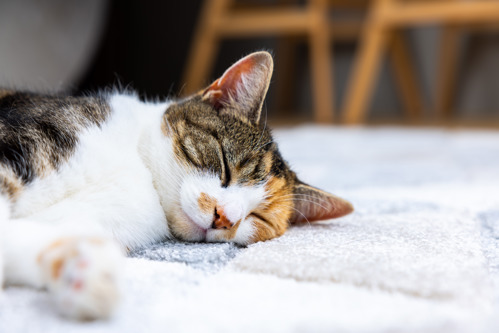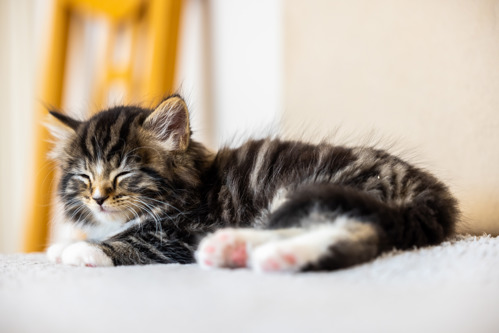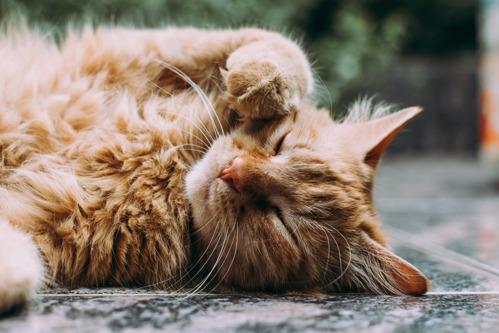Signs of cats feeling stressed and what you can do about it
Like humans, cats are prone to stress. But it can be tricky to tell if your cat is feeling unsettled.
Cats are subtle in their body language, so you’ll need to keep an eye on them to ensure they are happy.

If you notice any of the signs of cat stress or a change in their behaviour, first arrange a visit to the vet. They can rule out any medical causes for your cat’s change in behaviour.
If stress is the problem, read on for our top five tips for reducing your cat’s stress.
Signs of cat stress
- becoming more withdrawn or hiding more than usual
- becoming less tolerant of people
- hesitating or becoming reluctant to use the litter tray, go through the cat flap or sit on your lap
- eating or drinking less, or overeating
- scratching the furniture
- excessive meowing
- hissing or growling
- crouching and looking tense
- exaggerated swallowing or licking their nose
- vomiting or diarrhoea
- sleep disturbance
- pacing, circling or restlessness
- a scruffy or matted coat
- toileting outside the litter tray
- overgrooming
For more tips on recognising signs of stress in your cat’s body language, watch our video.
How to reduce your cat’s stress
1. Make sure your cat has everything they need
It might seem obvious, but ensuring your cat has all of their essential items can help reduce stress. This includes:
- a litter tray
- food and water bowls
- a scratching post
- a hiding place
- a bed
Where you put these items can also have a surprising impact on your cat’s stress levels too. Cats prefer to have their food bowl, water bowl and litter tray in separate locations. Make sure your cat’s essential items aren’t in an area with lots of noise or people. Find out where to put your cat's essential items.

2. Give your cat some space
Cats are solitary creatures, so they don’t like to be crowded by others. This includes other cats, other pets and even children or other family members too. Ensuring your cat always has space to escape from the chaos is a good way to reduce their stress. A quiet spot somewhere high up is ideal. Try a cardboard box on a sturdy shelf or our Hide & Sleep® cat hide, designed by Cats Protection experts.
3. Try not to handle them if they’re not keen
While many cats like to be stroked for a long period of time, others are happier to enjoy their own company. Some cats might be quick to tell you that they’re unhappy while others are more subtle in their behaviour. Pay attention to their body language. Always make sure they have the freedom to move away from you when they wish. Find out how to read your cat's body language.
4. Avoid cat intruders
If your cat is stressed due to a neighbourhood cat invading their space or garden, it can be tricky to solve the issue. If you know who the cat belongs to, and you’re on good terms with the owner, you could try a friendly chat. Make the suggestion to share the space by ensuring the cats explore outdoors at different times. Find out how to prevent cat bullying from neighbourhood cats. Otherwise, ensure your cat has all their essential items both indoors and outdoors. This will give them everything they need in their own territory and reduce competition with other local cats. Try to also have an entry point to the house that can only be accessed by your cat. For example, a microchip-activated cat flap. Get a discount on Sure Petcare microchip cat flaps.
5. Help them to handle changes before they happen
Cats are creatures of habit. Routine is important to them. Anything that disrupts this can leave them feeling stressed. Preparing your cat for changes reduces the risk of stress. Find advice for helping your cat cope with:

If your cat is still showing signs of stress, contact a qualified cat behaviourist from the Animal Behaviour and Training Council. They can give tailored advice about your cat’s specific situation. How to find a cat behaviourist.



